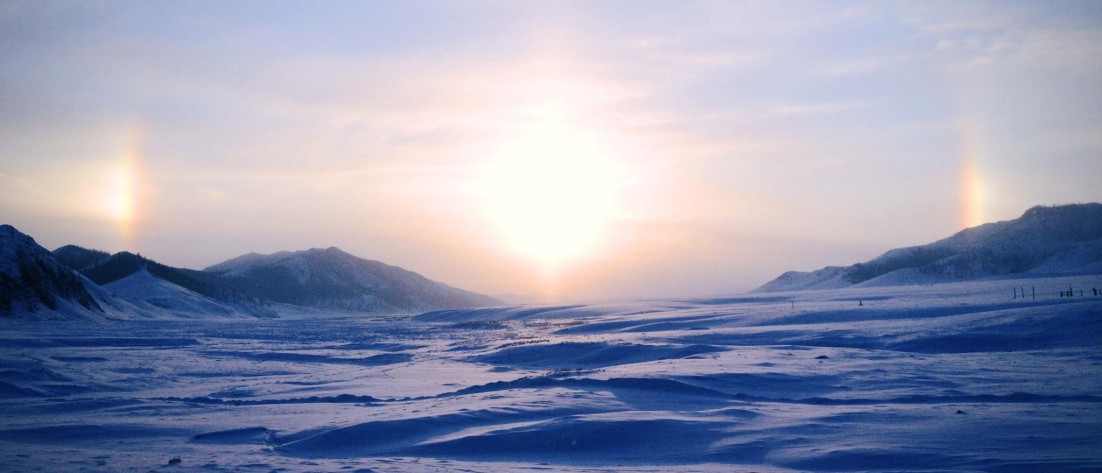Those who know me at all know I’ve always been a horse girl. As a child, I collected figurines and books, and not just The Saddle Club and Black Beauty, either; my bookshelves were cluttered with anthologies and lots of non-fiction. I attended a sleep-away horse camp from age 11 to 14 and took several years of horseback riding lessons in middle and high school, as well as two semesters in college. And then, of course, I spent three summers leading trail rides and teaching horsemanship and animal science merit badges at MaKaJaWan Scout Reservation.
My love of horses, in fact, was a large part of my decision to come to Mongolia. I’ll admit that I didn’t know much about the country when I applied to be a Fulbrighter here. It was cold, I knew that much. It was the home of Genghis Khan. And it was a country in which horses held great cultural significance. And that was enough for me.
So it comes as a surprise to most people when I tell them that I eat aduuny max/адууны мах – horse meat. “I thought you loved horses!” they say, or “how can you eat them when you’ve worked with them?”
Here’s the thing: Americans tend to think of horses the way we think of pets. We name our horses, build relationships with them. I wouldn’t be able to kill and eat one of the camp horses unless a) I had no other sources of food, or b) doing so was a mercy to that animal. I wouldn’t want to kill them because I love them, but if they had to die, I don’t see how eating them would dishonor their memories or make my love of them any less.
But Mongolian horses are a different story. To call them “a breed apart” from the domesticated horses we know is an understatement. They’re a different subspecies: Equus ferus przewalskii instead of Equus ferus caballus, commonly known as Przewalski’s horses. They’re shorter and stockier than most domesticated breeds, and exceptionally stubborn. Even the prized Naadam racers are still half-wild; they may be broken to bridle and saddle, but you’re not going to see them performing dressage.
More importantly, the Mongolians view them the same way they do yaks, sheep, and cows: as livestock. They are arguably the most highly-valued variety of livestock, and one of only two that are commonly ridden (camels being the other), but they are livestock nonetheless. They are not typically named, but referred to by color or other attribute: “the grey one,” “the brown one.” They are ridden, and they are milked (more on that later) – and they are eaten.
In America, cheap cuts of meat are full of fat and connective tissue, while leaner cuts are more expensive; in Mongolia, it’s the opposite. Americans might like fat that’s well-marbled into the meat, but we don’t typically eat chunks of straight-up fat; Mongolians do. “жаахон өөх!” we Americans plead at the meat market – only a little fat! – to bewildered and often uncooperative butchers. Every Mongolian knows that the fat is the best part, and good for you besides; why wouldn’t we want it?
Stockily built they may be, but Mongolian horses are skinny, and that skinniness shows up on the butcher’s block. Aside from a thin layer of disconcertingly orange subcutaneous fat, horse meat is the leanest that is widely available. We Westerners flock to it for that reason. We also love it for its price: 5000 tugruks per kilo during the winter, versus 7500 for beef. Most of the Americans in Erdenet are Peace Corps Volunteers barely getting by on only a few hundred dollars per month; those 2500 tugs make a difference.
For reasons that are not entirely clear to me, horse is only eaten in the winter. Some Mongolians have told me that they only eat horse in early winter; by spring, the horses are too skinny. Others have said that horse meat is considered particularly nutritious and thus is saved for consumption in the winter, when it’s most needed. Whatever the reason, it is definitely the meat most subject to seasonal availability. There’s none to be had at the market now, and I miss it.
So yes, I eat horse. It’s cheap and lean, and tasty besides. I’ve never been squeamish about eating other farm animals; why should I start with horses?







